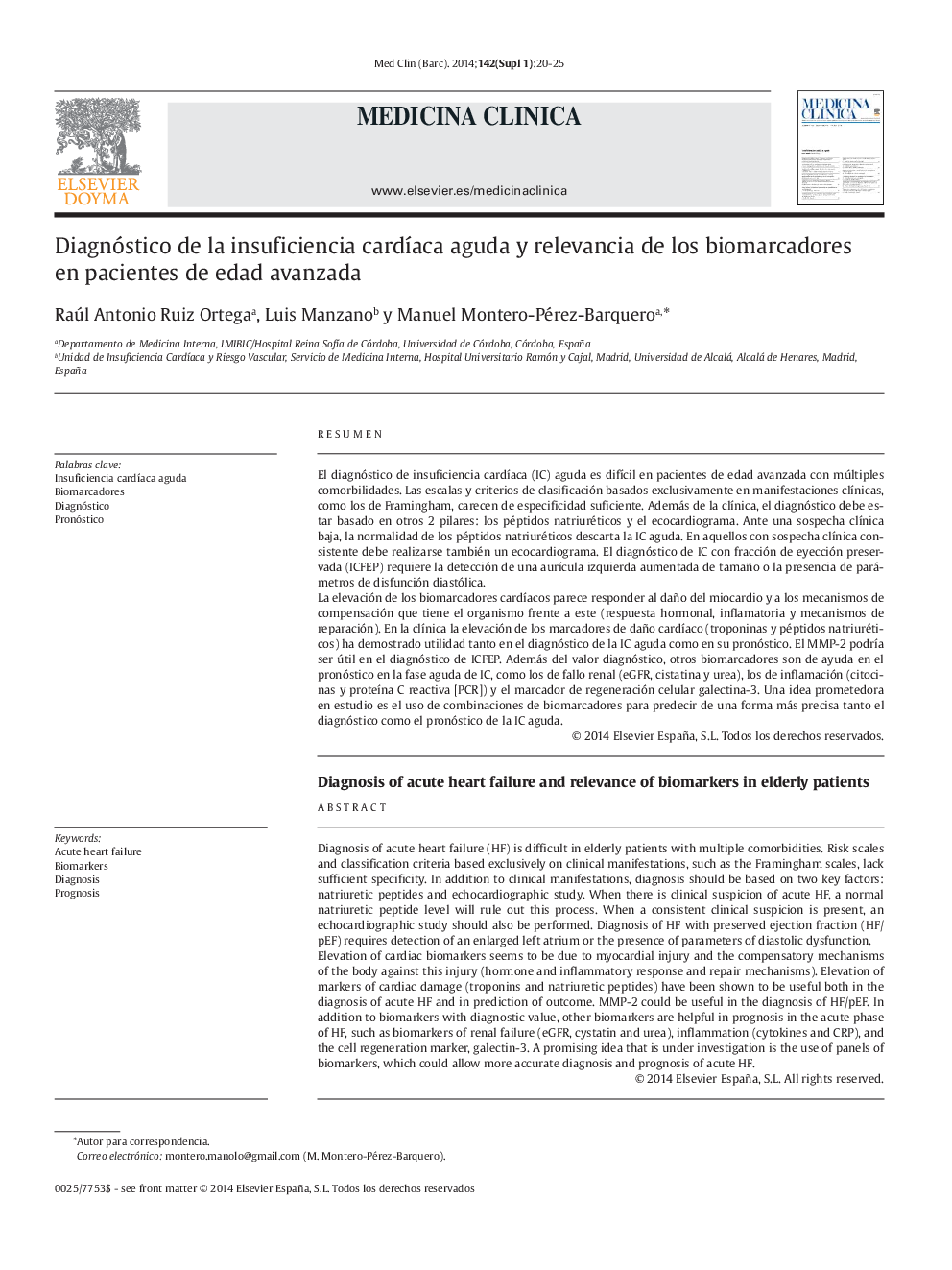| کد مقاله | کد نشریه | سال انتشار | مقاله انگلیسی | نسخه تمام متن |
|---|---|---|---|---|
| 3800653 | 1244648 | 2014 | 6 صفحه PDF | دانلود رایگان |
ResumenEl diagnóstico de insuficiencia cardíaca (IC) aguda es difícil en pacientes de edad avanzada con múltiples comorbilidades. Las escalas y criterios de clasificación basados exclusivamente en manifestaciones clínicas, como los de Framingham, carecen de especificidad suficiente. Además de la clínica, el diagnóstico debe estar basado en otros 2 pilares: los péptidos natriuréticos y el ecocardiograma. Ante una sospecha clínica baja, la normalidad de los péptidos natriuréticos descarta la IC aguda. En aquellos con sospecha clínica consistente debe realizarse también un ecocardiograma. El diagnóstico de IC con fracción de eyección preservada (ICFEP) requiere la detección de una aurícula izquierda aumentada de tamaño o la presencia de parámetros de disfunción diastólica.La elevación de los biomarcadores cardíacos parece responder al daño del miocardio y a los mecanismos de compensación que tiene el organismo frente a este (respuesta hormonal, inflamatoria y mecanismos de reparación). En la clínica la elevación de los marcadores de daño cardíaco (troponinas y péptidos natriuréticos) ha demostrado utilidad tanto en el diagnóstico de la IC aguda como en su pronóstico. El MMP-2 podría ser útil en el diagnóstico de ICFEP. Además del valor diagnóstico, otros biomarcadores son de ayuda en el pronóstico en la fase aguda de IC, como los de fallo renal (eGFR, cistatina y urea), los de inflamación (citocinas y proteína C reactiva [PCR]) y el marcador de regeneración celular galectina-3. Una idea prometedora en estudio es el uso de combinaciones de biomarcadores para predecir de una forma más precisa tanto el diagnóstico como el pronóstico de la IC aguda.
Diagnosis of acute heart failure (HF) is difficult in elderly patients with multiple comorbidities. Risk scales and classification criteria based exclusively on clinical manifestations, such as the Framingham scales, lack sufficient specificity. In addition to clinical manifestations, diagnosis should be based on two key factors: natriuretic peptides and echocardiographic study. When there is clinical suspicion of acute HF, a normal natriuretic peptide level will rule out this process. When a consistent clinical suspicion is present, an echocardiographic study should also be performed. Diagnosis of HF with preserved ejection fraction (HF/pEF) requires detection of an enlarged left atrium or the presence of parameters of diastolic dysfunction.Elevation of cardiac biomarkers seems to be due to myocardial injury and the compensatory mechanisms of the body against this injury (hormone and inflammatory response and repair mechanisms). Elevation of markers of cardiac damage (troponins and natriuretic peptides) have been shown to be useful both in the diagnosis of acute HF and in prediction of outcome. MMP-2 could be useful in the diagnosis of HF/pEF. In addition to biomarkers with diagnostic value, other biomarkers are helpful in prognosis in the acute phase of HF, such as biomarkers of renal failure (eGFR, cystatin and urea), inflammation (cytokines and CRP), and the cell regeneration marker, galectin-3. A promising idea that is under investigation is the use of panels of biomarkers, which could allow more accurate diagnosis and prognosis of acute HF.
Journal: Medicina Clínica - Volume 142, Supplement 1, March 2014, Pages 20-25
